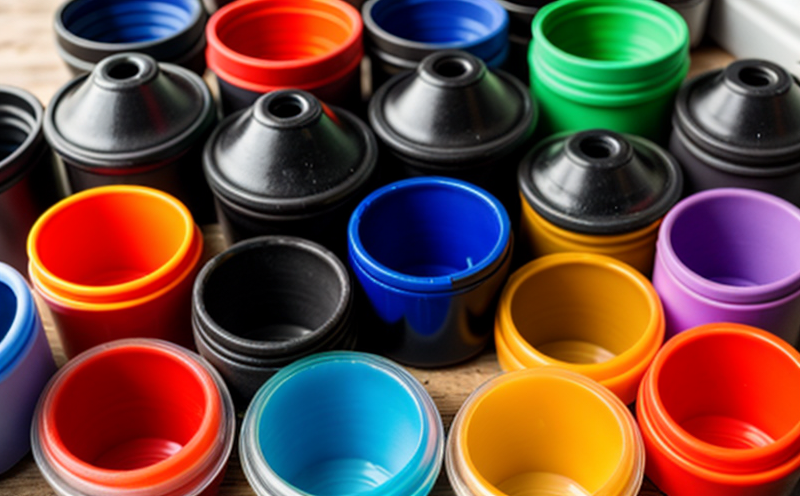EPA 3545 Solvent Extraction Testing of Recycled Plastics
The EPA method 3545, also known as the solvent extraction test, is a critical procedure for determining the amount and type of residual solvents present in recycled plastics. This testing ensures that the plastic materials used are safe for various applications, particularly those involving direct contact with food or pharmaceuticals.
The purpose of this test is to extract organic compounds from recycled plastics using a solvent mixture (typically dichloromethane and methanol). Once extracted, these solvents can be analyzed by gas chromatography-mass spectrometry (GC-MS) for identification and quantification. The results help ensure that the recycled materials meet regulatory standards set forth by agencies like the FDA or other relevant bodies.
The process involves several key steps: sample preparation, solvent extraction, filtration, evaporation, and analysis. During sample preparation, small pieces of plastic are ground into a fine powder and then weighed accurately according to the procedure outlined in ASTM D6882-15. Solvent extraction follows where dichloromethane and methanol are added at specific ratios as per EPA 3545 guidelines.
The extracted mixture is then filtered through a glass filter to remove solid particles, after which the solvent is allowed to evaporate under controlled conditions. Once dry, the remaining residue can be analyzed using GC-MS for identification of individual compounds and quantification based on peak areas or response factors.
Accurate and reliable results from EPA 3545 testing are crucial for manufacturers who rely heavily on recycled plastics in their products. By adhering strictly to this method, labs ensure compliance with industry standards such as ASTM D6882-15 and other local regulations regarding plastic waste management.
Understanding the nuances of this test is essential for anyone involved in quality assurance or regulatory compliance within industries dealing with recycled plastics. From raw material suppliers to end-product manufacturers, understanding how these tests impact product safety and performance can significantly influence business decisions.
In summary, EPA 3545 provides a robust framework for ensuring that recycled plastics used in manufacturing processes do not contain harmful residues. This method plays an indispensable role in maintaining high standards of quality and safety across multiple sectors including food packaging, medical devices, and consumer goods.
Applied Standards
The EPA 3545 solvent extraction test adheres to several recognized international standards which guide its application:
- ASTM D6882-15: This standard provides guidelines for the preparation of recycled plastics samples before they undergo solvent extraction.
- EPA Method 3545: This document specifies the procedure for extracting organic compounds from plastic waste using dichloromethane and methanol.
These standards ensure consistency in sample handling, reagent usage, and analytical techniques across different laboratories. Compliance with these guidelines helps maintain accurate results that are widely accepted within regulatory frameworks.
Why Choose This Test
Selecting EPA 3545 for your recycled plastic testing needs offers numerous advantages:
- Regulatory Compliance: By adhering to this method, you ensure that your products meet stringent environmental protection regulations.
- Precision and Accuracy: The rigorous extraction process combined with advanced analytical techniques guarantees precise quantification of residual solvents.
- Consistency: Using standardized procedures ensures consistent results across multiple batches or samples from different sources.
- Trusted Methodology: EPA 3545 has been widely adopted and recognized by industry experts as a reliable way to assess recycled plastics quality.
These factors make it an ideal choice for companies looking to maintain the highest levels of product safety and environmental responsibility.
Use Cases and Application Examples
EPA 3545 testing has broad applications across various industries where recycled plastics are used:
- Food Packaging: Ensures that plastic components in food packaging do not contain harmful substances, protecting consumer health.
- Pharmaceutical Manufacturing: Validates the safety of medical devices and equipment made from recycled plastics to prevent contamination risks.
- Consumer Goods: Guarantees that everyday items like toys or household appliances comply with safety standards regarding residual solvents.
- Construction Industry: Helps verify the quality of recycled plastic products used in construction, ensuring durability and performance.
In each case, EPA 3545 testing helps ensure that recycled plastics are safe for intended uses while also promoting sustainable practices throughout supply chains.





